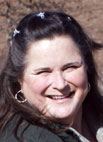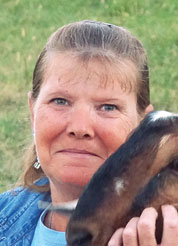
Karen Haralson received her first cow from her dad, Clarence Churchill, when she was 3 years old. Her family farm was purchased by her father in 1949, and after Karen’s dad retired, she took over the family’s operation. She also inherited property in Hector, Ark., which has been in her family since 1842.
“I got heavily involved in farming in 1977 with registered Simmental cattle,” said Karen. “I’ve learned much about farming through farm visits to other farms. I would use what I had seen and sometimes it worked on my farm,” said Karen, “and sometimes it wouldn’t,” she laughed.
Karen’s farm ties run deep, with her daughter carrying on the tradition. “I have a daughter that loves ranching as much as I do, and she was involved in 4-H,” said Karen. “However, she is working in computers for a cattle magazine today,” replied Karen proudly. “Both of my grandsons are in 4-H, and my oldest grandson loves showing the cattle and working the ranch as well.”
Farming Hurdles
Farming presents a variety of obstacles and Karen has faced her own set of challenges, but offered this advice. “People think the beef prices are high, but the fuel prices are extravagant,” she stated soberly. “When you add feed prices to that it gets tough, you really have to learn where to cut corners without cutting your quality.”
Nutrition
Showing cattle takes dedication and attention to detail and Karen says that focusing on nutrition is where it starts.
“I feed my show cattle a show ration through the showing season, and then they go on a maintenance ration. The rest of the herd get hay and a supplement during winter and mineral year round,” stated Karen
Pasture Management
“I rotate my cattle depending on how they have grazed the pasture,” she said. “Leaving my Bermuda grass a little longer in the fall makes for better grazing. I had Tifton 44, a hybrid Bermuda, sprigged in to my pastures a long time ago, and it’s grown into its own entity now, which it will naturally do over a period of time.” Karen also fertilizes with chicken litter when needed.
Herd Management
Karen’s herd calves in the fall and early spring and she keeps accurate records of her best heifers throughout the year, so that she can manage the herd efficiently.
“I replace my bulls every 3 years, and I gather and work my cattle twice a year,” she said. “The grandsons get in on the working too. I have a friend that also comes over to help and I help him with his cattle. He is a great friend,” she said smiling.
Karen has been a member of the Arkansas Cattlemen’s Association for 35 years, currently serving as the President of the Pope County Cattlemen’s Association. Karen was also the Secretary of the Arkansas Simmental Association for 25 years, a member of both the Pope County Fair Board and the Arkansas State Fair Board.
Karen has persevered through trial and error through the years and come out on top. She lives by the motto, “Look at what people are doing, listen to what they are saying, but do what is best for you.”







